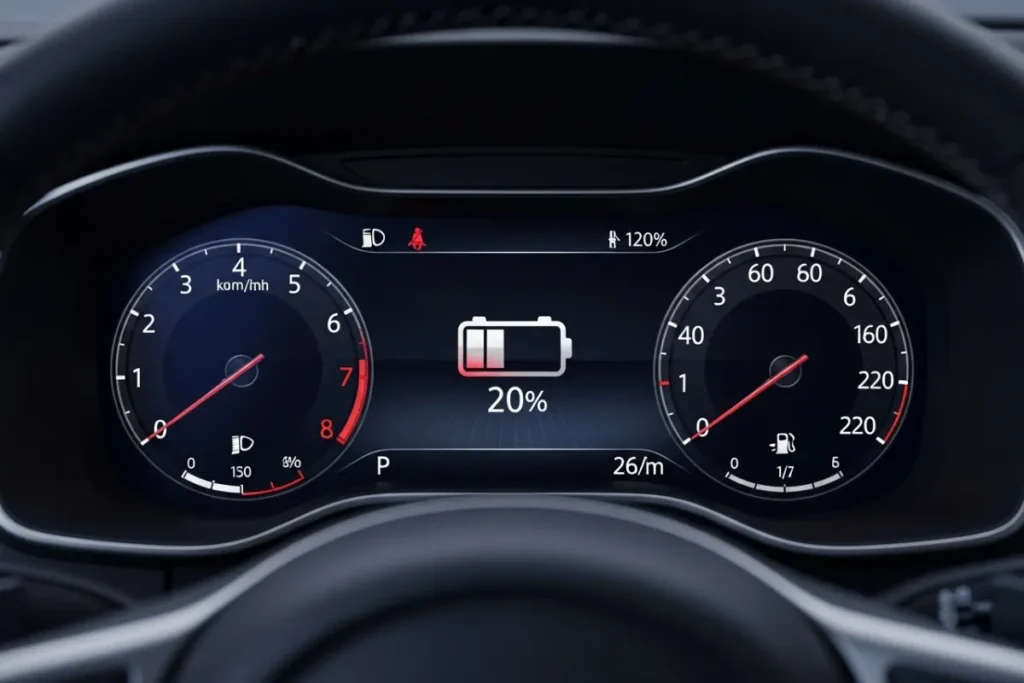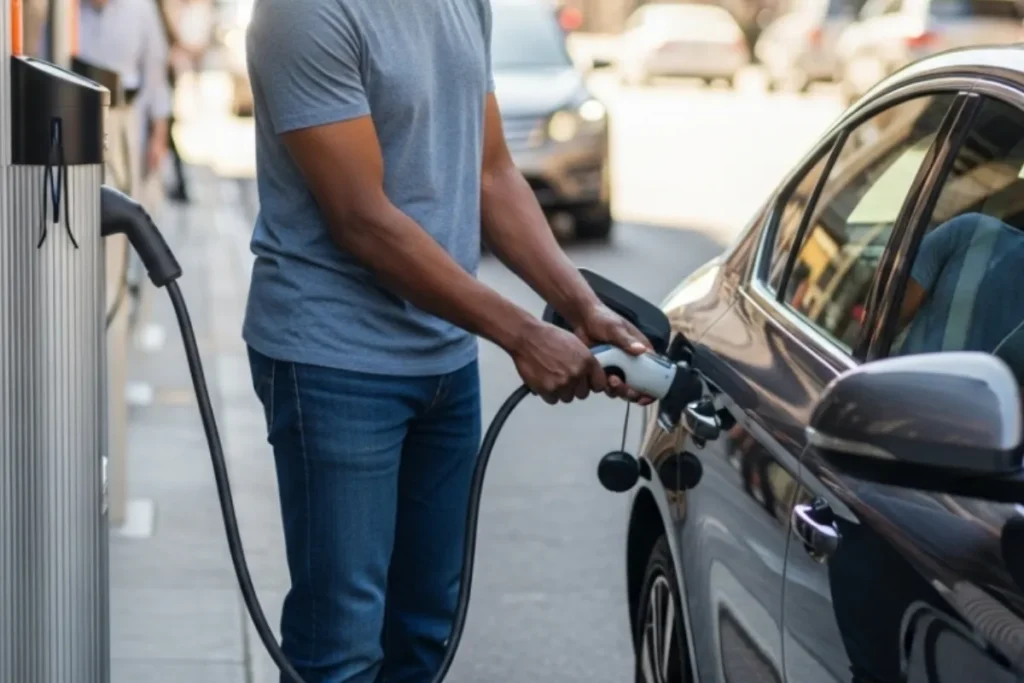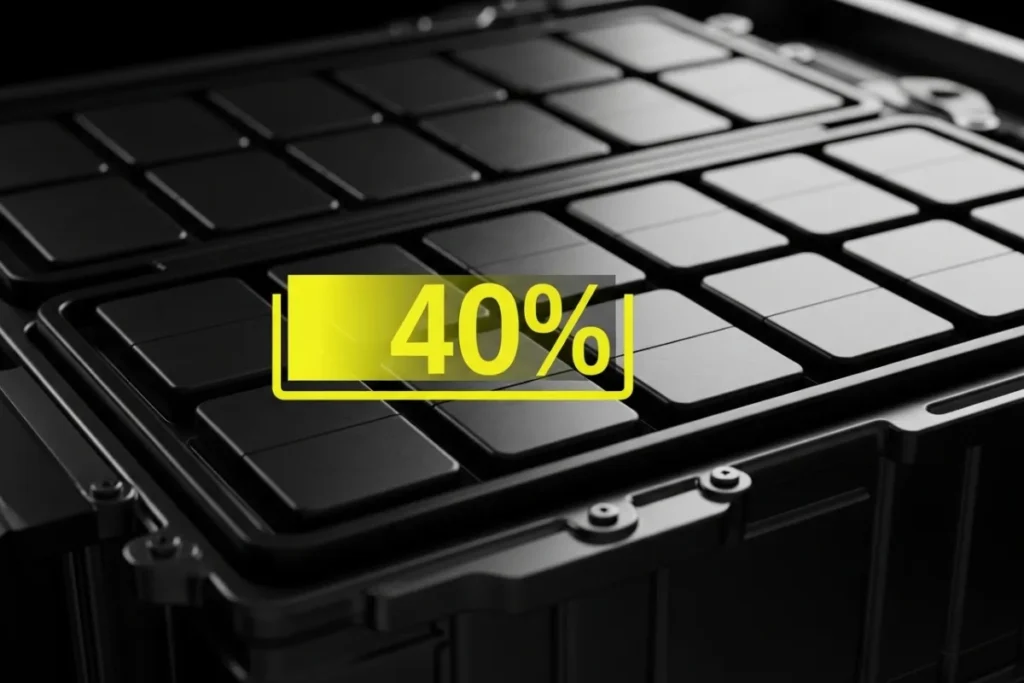Understanding the basics of EV battery management is essential for any electric vehicle owner. This comprehensive guide covers the importance of maintaining optimal charge levels, avoiding deep discharge, and following manufacturer guidelines to prolong battery lifespan. Learn about the risks of deep discharge, best charging practices, and how climate impacts battery performance. Discover long-term strategies for maintaining battery health and improving vehicle efficiency, ensuring your electric vehicle remains reliable and effective for years to come.
Understanding EV Battery Basics
Electric vehicle (EV) batteries are intricate systems that store and provide electrical energy needed to power the vehicle. The most common type of battery used in EVs is the lithium-ion battery, which is favored for its energy density, efficiency, and longevity. The basic components involve an anode, cathode, and electrolyte, which work together to facilitate the flow of electrical current when the vehicle is in operation. Understanding these components is essential for grasping how an EV battery functions and the optimal strategies for its maintenance.
Central to the management of EV batteries are two key concepts: depth of discharge (DoD) and state of charge (SoC). The depth of discharge refers to the percentage of the battery capacity that has been used, while the state of charge indicates the current battery capacity compared to its total capacity. Maintaining an ideal balance between DoD and SoC is crucial to avoid deep discharge of the EV battery, which can lead to significant degradation over time. This degradation not only reduces the overall efficiency of the battery but also impacts the vehicle’s range and performance.
Regular monitoring of charge levels is essential for EV battery health. Optimal EV charging practices, such as avoiding complete depletion and excessive charging cycles, can significantly enhance battery lifespan. One of the best practices is to keep the battery’s charge level between 20% and 80%, which mitigates the risk of ev battery depletion and maintains ev range longevity. Furthermore, applying these health tips will help you sustain the performance of your EV battery, ensuring that it operates efficiently throughout its lifecycle.
The Risks of Deep Discharge
Maintaining the health of an electric vehicle (EV) battery is crucial for ensuring optimal vehicle performance and longevity. A significant risk associated with EV battery management is the phenomenon known as deep discharge. This occurs when the battery charge level falls below 20%, an event that can lead to serious consequences for both the battery’s health and the overall functionality of the vehicle.
Deep discharging can result in permanent damage to the battery’s cells, significantly reducing its capacity over time. Experts emphasize that allowing the EV battery to reach a critically low state of charge can initiate chemical reactions that degrade the battery’s materials, a process that directly affects its efficiency. Research indicates that this not only impacts the battery life but also reduces the vehicle’s range, ultimately defeating the purpose of an electric vehicle that aims for sustainability and practicality.
In practical terms, an EV that frequently operates under conditions of deep discharge may exhibit inconsistent performance and a shortened lifespan. Real-world examples from EV manufacturers reveal that vehicles subjected to repeated deep discharges can lose up to 30% of their battery capacity in just a few years. By establishing routines that prioritize optimal EV charging practices, users can mitigate the potential for deep discharge scenarios. Regular charging, ideally before reaching the lower threshold of 20%, preserves the battery’s health and helps maintain the EV’s range longevity.
In addition to avoiding deep discharge, other EV battery health tips include using smart charging options and ensuring that charging sessions are consistent. Implementing these strategies will significantly contribute to avoiding EV battery depletion while maximizing overall performance. Therefore, understanding and managing deep discharge is essential for all electric vehicle owners who wish to prolong their battery’s life and ensure optimal performance.

Manufacturer Guidelines and Cutoff Points
Electric vehicle (EV) manufacturers establish specific guidelines concerning charge levels and discharge limits that are integral to ensuring optimal EV charging and the longevity of the deep discharge EV battery. Each manufacturer may provide varied recommendations, reflecting their distinct battery technologies and engineering. Understanding these guidelines is essential for EV owners who wish to avoid EV battery depletion and maintain EV range longevity.
Most manufacturers recommend keeping the battery charge between 20% and 80% as a general practice. Charging beyond 80% can lead to increased stress on the cells, while allowing the battery to drop below 20% frequently can result in deep discharge, which may adversely impact overall battery health. These specific cutoff points stem from extensive testing and research, indicating the conditions that best enhance battery performance and lifespan.
Moreover, certain EV models may utilize advanced battery management systems (BMS) that automatically manage charging and discharging, customizing the experience according to the user’s driving habits. Nonetheless, adhering to manufacturer guidelines remains imperative. Neglecting these recommendations could lead to accelerated wear of battery components and diminish the driving range over time.
In addition to these charge level practices, manufacturers may also advise users against depleting their battery completely before recharging. Regularly following the optimal EV charging practices not only preserves battery life but also sustains the efficiency of the vehicle. Users should also stay informed about any software updates or changes in guidelines from their vehicle’s manufacturer, as technology evolves rapidly in the electric vehicle sector.
The Benefits of Partial and Regular Charging
Maintaining the health of a deep discharge EV battery requires a consistent and mindful approach to charging. Unlike traditional vehicles, electric vehicles (EVs) benefit significantly from partial charging habits. Rather than allowing the battery to fully deplete before recharging, which can lead to long-term damage, it is advisable to keep the battery within an optimal charge range. This approach not only preserves battery health but also enhances the vehicle’s overall performance.
Optimal EV charging suggests that regular and partial charging is greatly preferable. It is recommended to recharge when the battery reaches approximately 20% to 30% capacity, ideally topping it off to around 80% to 90%. This method of frequent, modest charging helps in avoiding ev battery depletion, which can lead to a deep discharge that compromises the battery’s lifespan. Such practices can also improve the efficiency and longevity of your EV, ensuring you maintain optimal performance during everyday use.
Additionally, regular charging routines can eliminate the anxiety associated with running low on battery. By adopting a habit of consistently plugging in your vehicle, you can ensure that the EV battery health remains intact, reducing the risk of a deep discharge. It’s also important to stay aware of the charging environment; using high-quality chargers can affect charging speed and battery health positively.
Incorporating these habits into your EV lifestyle helps facilitate a smoother daily operation and prolonged battery life. Adjusting your mindset toward maintaining the health of your EV battery through partial charging can significantly enhance your driving range and ensure your investment serves you well for years to come.

Avoiding Full Depletion – Best Practices
One of the most critical factors in maintaining the health of your electric vehicle (EV) battery is to avoid full depletion. Deep discharge of an EV battery can lead to diminished capacity and accelerated aging. To safeguard your battery’s longevity, it is essential to adopt effective strategies that help in preventing this condition.
First and foremost, planning your trips is crucial. By mapping out your routes with charging stations in mind, you can considerably reduce the risk of running your battery down to zero. Utilize various apps that provide real-time information about nearby charging locations, which can assist you in keeping your battery levels within a healthy range. Having a scheduled charging plan before heading out not only aids in avoiding situations where you might fully deplete your battery but also enhances your overall travel experience.
Additionally, consider setting charging reminders to ensure you maintain optimal EV charging habits. Setting alerts for yourself to plug in your vehicle during off-peak hours can be very beneficial. This practice not only ensures your battery remains charged but also takes advantage of lower electricity rates during those times. Smart technology can play a significant role in this as well. Many EVs come equipped with apps that notify you when your battery falls below a certain percentage, allowing you to take prompt action to recharge it.
It is also recommended to integrate battery management systems available in EVs. These systems can help monitor battery health and suggest optimal charging times tailored to your driving patterns. Implementing these tips will not only help avoid EV battery depletion but also maintain the health and longevity of your vehicle’s range. By adopting a proactive approach, you will ensure that your electric vehicle remains a reliable and efficient mode of transportation for years to come.
Monitoring Battery Health and Performance
Monitoring the health and performance of your electric vehicle (EV) battery is essential for ensuring its longevity and efficiency. To effectively manage your deep discharge EV battery, it is crucial to utilize the vehicle’s built-in diagnostics alongside dedicated applications. These tools provide real-time insights into the battery’s state of charge (SOC) and overall health status, empowering drivers to make informed maintenance decisions.
Most modern electric vehicles come equipped with onboard systems that track various battery metrics, including voltage, temperature, and charge cycles. By regularly reviewing this data, you can establish a baseline understanding of your battery’s performance. The SOC is particularly important, as it indicates how much charge is remaining in the battery compared to its capacity, and can greatly affect your EV range longevity.
Utilizing specialized mobile applications can further enhance your ability to monitor battery health. These applications often offer detailed analytics on charge and discharge rates, current energy consumption, and recommendations for optimal EV charging practices. Many are designed to alert you when the battery is nearing depletion, helping you avoid ev battery depletion during your travels. By taking these proactive measures, you can not only sustain your battery’s health but also maintain its efficiency over time.
Moreover, understanding battery performance data allows you to adapt your driving habits accordingly. For example, if you notice a significant drop in performance metrics, it may be time to consider battery maintenance tips or seek professional assistance. Strategies such as adhering to charging protocols and avoiding deep discharges can significantly extend the life of your battery. Ultimately, keeping an eye on the health of your EV battery through consistent monitoring will lead to a more reliable and efficient driving experience.

Climate Impact on EV Battery Performance
Electric vehicles (EVs) employ lithium-ion batteries, which can be significantly affected by extreme climate conditions. Both high and low temperatures have the potential to impair the functioning of the deep discharge EV battery, leading to suboptimal performance and reduced overall battery life. It is essential for EV owners to be aware of how climatic factors can influence their vehicle’s battery health and charging patterns.
High temperatures can accelerate the chemical reactions within the battery, which may lead to higher rates of degradation if the battery is continually exposed to heat. This increased degradation can cause a decline in capacity, affecting the overall EV range and leading to premature battery depletion. To maintain optimal EV charging practices in hot climates, it is advisable to park the vehicle in shaded areas or garages, utilize cooling systems during charging, and consider scheduling charging during cooler hours of the day. These measures help avoid overheating the battery, thereby extending its lifespan.
Conversely, cold temperatures can slow down the chemical reactions within the battery, resulting in reduced efficiency and power output. EV charging may take longer, and drivers may notice diminished range during colder months. To ensure ev battery health, owners should avoid allowing their charge levels to drop too low in freezing conditions, as deep discharge can lead to irreversible damage. Strategies such as preconditioning the vehicle while connected to a charger and maintaining a charged state between 20% to 80% can contribute significantly to maintaining battery health in colder environments.
By adjusting charging habits according to seasonal changes and being proactive about temperature influences, EV owners can effectively avoid ev battery depletion and promote the longevity of their vehicle’s battery performance. As understanding climate impact on battery performance is crucial, implementing these ev battery health tips can fuel optimal driving experiences across various weather conditions.
Long-Term Strategies for Battery Longevity
The longevity of an electric vehicle (EV) battery is vital for ensuring optimal EV charging and maintaining its overall performance. One of the most effective long-term strategies for prolonging battery life is the utilization of advanced battery management systems (BMS). These systems monitor the health of the deep discharge EV battery, ensuring that it operates within optimal parameters. By keeping track of voltage levels, temperature, and charge cycles, BMS can effectively mitigate risks associated with overcharging or excessive depletion, helping to avoid EV battery depletion.
Seasonal maintenance also plays a crucial role in maintaining EV battery health. During extreme weather conditions, both hot and cold temperatures can impact battery efficiency. It is advisable to park your EV in a garage or shaded area during summers and ensure adequate insulation in winters. This practice aids in preserving the battery’s capacity and minimizes the need for deep discharge cycles, which can adversely affect battery health. Moreover, regular checks on the battery’s state of charge can help maintain EV range longevity.
Another significant factor in battery maintenance is battery conditioning during periods of inactivity. If an EV is not in use for an extended time, it is essential to charge it periodically to prevent deep discharge scenarios that compromise battery health. Keeping the battery charged between 20% and 80% proves beneficial. This range not only optimizes EV charging but also aligns with best practices, ensuring a prolonged lifespan for the battery.
Implementing these long-term strategies not only safeguards the health of your EV battery but also enhances the overall efficiency and reliability of your electric vehicle. By proactively addressing maintenance and monitoring practices, EV owners can enjoy the full benefits of their vehicles while extending battery life. Following these best practices will ensure that your EV battery remains in peak condition for years to come.
| Strategy | Description | Benefits |
|---|---|---|
| Use of Battery Management Systems (BMS) | Monitor voltage, temperature, and charge cycles to prevent overcharging or deep discharge. | Extends battery life and prevents degradation. |
| Seasonal Maintenance | Park in shaded areas during summer; ensure insulation in winter. | Maintains battery efficiency in extreme temperatures. |
| Avoid Deep Discharge | Reduce full battery depletion; maintain moderate charge levels. | Preserves battery capacity and health. |
| Battery Conditioning During Inactivity | Charge periodically when the vehicle is unused; keep charge between 20%–80%. | Prevents deep discharge and ensures long-term battery stability. |
| Regular State of Charge Checks | Monitor and adjust charge levels consistently. | Supports consistent EV range and performance. |
| Proactive Maintenance Approach | Follow a routine for monitoring and preventive care. | Enhances overall EV efficiency and reliability. |
Conclusion
Maintaining optimal EV battery health is essential for ensuring the longevity, performance, and reliability of your electric vehicle. Throughout this article, we have discussed various best practices that can significantly contribute to achieving and maintaining healthy charge levels for your EV battery. Adopting these methods not only enhances the overall efficiency of your vehicle but also prolongs the lifespan of the battery, which is a critical component of an electric vehicle.
One of the core aspects to emphasize is avoiding deep discharge of the EV battery. Deep discharge can put unnecessary strain on the battery, potentially leading to accelerated degradation over time. It is advisable to charge your vehicle before it reaches critically low levels to promote optimal EV charging practices. Additionally, keeping your battery’s state of charge within a moderate range can further safeguard its health. For expert-backed charging guidelines—such as limiting charge to around 80% and avoiding deep discharge—see GreenCars’ EV Battery Maintenance Best Practices.
Furthermore, we delved into essential EV battery health tips, such as the importance of temperature management. Batteries tend to perform best at specific temperature ranges, and thus, it is vital to avoid exposing the battery to extreme heat or cold. Regularly checking your battery’s health through diagnostic tools can provide valuable insights and help you stay ahead of potential issues.
Incorporating these practices into your routine can significantly impact the longevity of your EV battery, allowing you to maintain optimal performance levels. The drive to enhance your vehicle’s range and functionality is intrinsically tied to your commitment to proper charging habits. Committing to healthy charging practices will ultimately lead to a more efficient and dependable electric experience for yourself and the environment.





